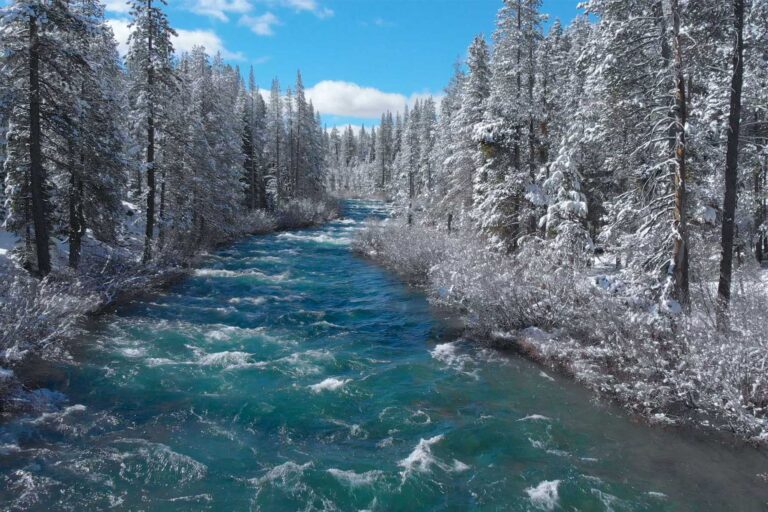Last year was one for the record books, with the pandemic, a statewide wildfire emergency, ongoing drought, and a lingering recession roiling California’s water landscape. These crises have exacerbated longstanding inequities in access to water services, and made it that much harder to accomplish important work to improve the resilience of the state’s water system and vulnerable ecosystems. Yet despite all the setbacks, the essential work of providing drinking water and wastewater services proceeded without a hitch—to which we all owe water workers a debt of gratitude.

Here’s a rundown of some of the year’s more pressing water-world challenges, and the PPIC Water Policy Center’s response to them:
- Safe and affordable drinking water: Affordability has been a growing problem for years, and it worsened during the pandemic as incomes fell. An emergency moratorium on shutoffs has helped ensure access for vulnerable residents, but also reduced utilities’ revenues. Utilities are worried about a longer-term rise in nonpayment, which affects their ability to keep their communities safe by maintaining and upgrading aging infrastructure. We focused on these issues with a series of interviews on our blog, a section in this year’s Priorities for California’s Water, and an expert panel at our annual water conference (virtual this year). Longer term, the complex issue of ensuring safe and affordable drinking water—which disproportionately affects low-income communities of color—will remain a central focus at the center for as long as these challenges continue.
- Freshwater ecosystems: California always has water conflicts, but 2020 was exceptional, with some 20 active lawsuits over efforts to establish new water quality and endangered species regulations for the Sacramento‒San Joaquin Delta. Efforts to negotiate a comprehensive agreement for this watershed have stalled, and the pandemic, recession, and drought make resolving these conflicts even more challenging. New strategies are needed. Our report on water for the environment laid out a novel approach for managing the state’s rivers that would restore more-natural, seasonal variability of river flows. The goal is to restore key ecosystem functions, make better use of water for ecosystems, and reduce conflict over environmental water allocations. An event on the topic, coupled with extensive outreach to decision makers, brought this information to a broad audience.
- Headwater forests: California’s wildfire siege was a shocking wake-up call on how much more work is needed to prepare for a longer, hotter climate-fueled fire season. One bright spot: even with a recession-constrained budget, wildfire safety was one of the governor’s top priorities, and the legislature enacted laws on some aspects of wildfire preparation and risk reduction. Our growing body of work on headwater forests now includes a review of who benefits from improved forest management. We also covered wildfire issues extensively on our blog.
- Groundwater management: Agriculture has faced many pandemic-related challenges—particularly regarding worker safety and market disruptions. But the grand challenge in many farming regions is to manage groundwater sustainably. Our review of the first round of groundwater sustainability plans helped build a shared understanding of how well these plans tackle core objectives, and where they fall short—such as ensuring that overdraft doesn’t cause domestic wells to go dry and that land subsidence is contained. And it furthered a conversation about how to manage water resources to build a strong foundation for the future. We also documented how forming water partnerships between San Joaquin Valley farmers—who face the steepest climb out from decades of depleting aquifers—with cities in Southern California would reduce water risks for both regions.
- Paying for water: Money is a perennial issue, but it’s even more of a brake on progress now. Depending on the length and severity of the current economic downturn, California’s water sector could face financial challenges for some time to come, and will most certainly face growing competition for scarce relief funds. We continue to focus on the complexities of paying for water priorities in all our work, and also with timely updates on the blog.
We’re energized to help find innovative ways to address these challenges and more, and to seek solutions that make every drop and dollar count. We’re working on projects that look at improving permitting processes to help speed efforts to make our ecosystems more resilient to the changing climate; how to include beneficiaries of improved forest management into durable funding solutions; and ways to ease the path to groundwater sustainability for urban, agricultural, and rural communities with water markets, groundwater storage partnerships, and climate-smart land use planning. We’re also beginning a major project to improve understanding of the impacts of drought, California’s perennial challenge.
With best wishes for a healthier, less stressful—and hopefully wetter—2021! And as always, we thank our supporters who enable this important work.
Ellen Hanak
P.S. You can sign up to receive our weekly blog post or get advance notice of new publications and events. And you can learn more about how to support the center’s work.



